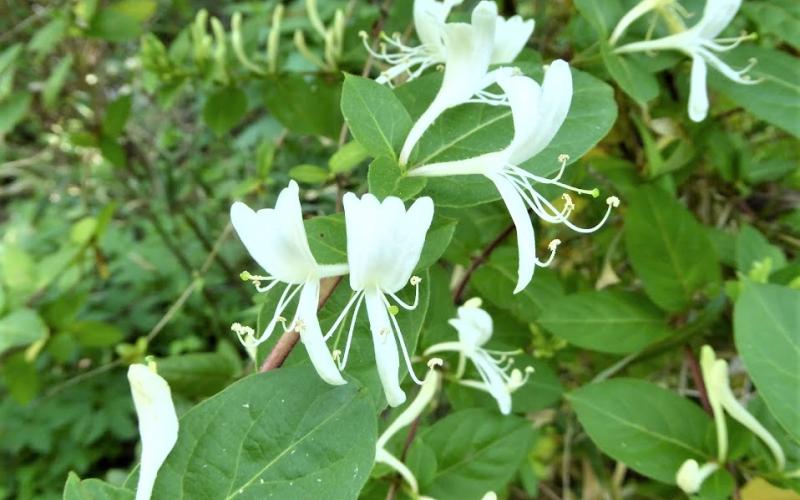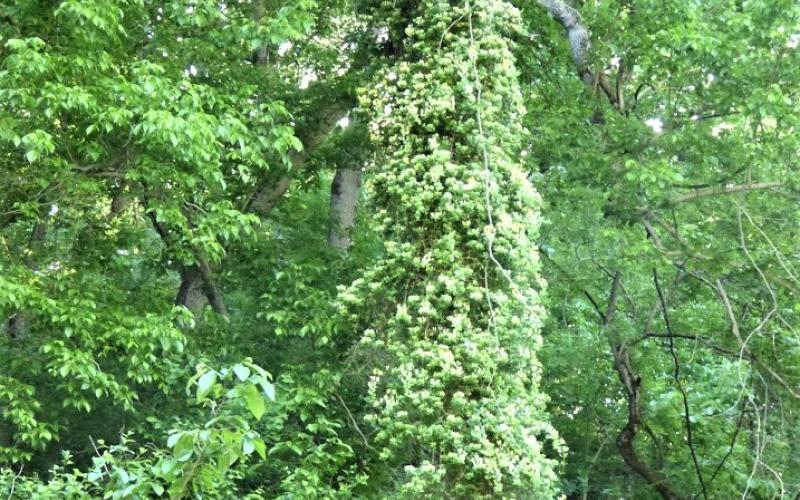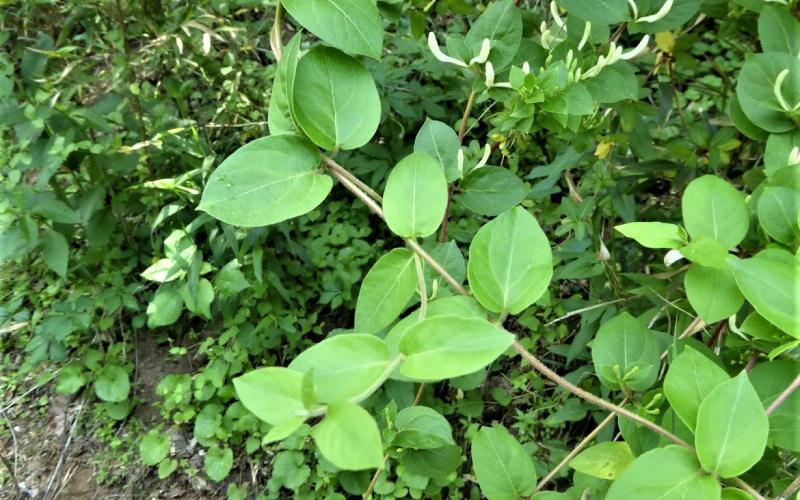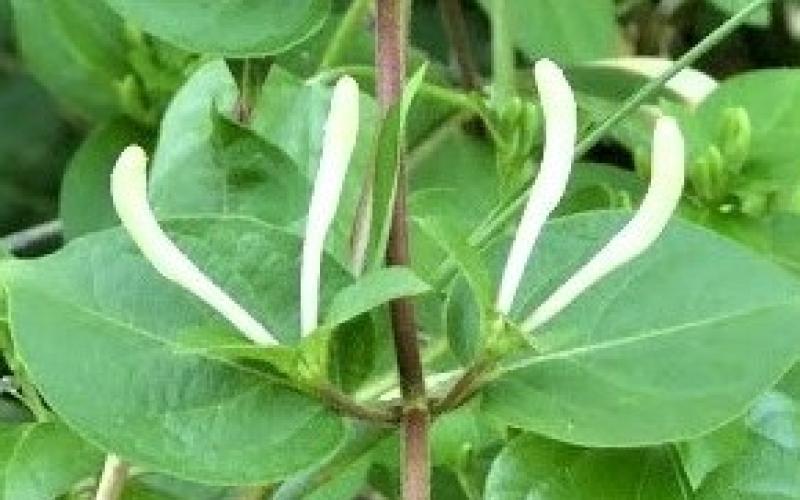Golden honeysuckle vine
Common name: Golden honeysuckle vine, Japanese honeysuckle
Scientific name: Lonicera japonica Thunb.
Synonyms: golden and silver honeysuckle
Legal status
All above and below ground parts of the plant must be destroyed. Additionally, no transportation, propagation, or sale of this plant is allowed. Failure to comply may result in an enforcement action by the county or local municipality.
Background
Since its introduction in 1806, it has spread to Ontario, Puerto Rico, and 38 states. It was introduced to the United States from Eastern Asia for use as an ornamental plant, for erosion control, and for wildlife forage and cover. Its ornamental value comes from the prolific fragrant flowers and dense, rapid growth.
Description
- A woody, perennial, twining vine that can grow 30 feet in length or more.
- Opposite leaves are ovate and 1.5 to 3 inches in length.
- Fruits are black to purple, glossy, and paired.
- Flowers are white when young and then become yellowish. The flowers are paired and tubular.
- Stems are hairy and reddish to light brown.
Habitat
Primarily occurs in disturbed habitats, but is also found in open woods, old fields, roadsides, and fence rows. Moderately shade tolerant but prefers full sun.
Means of spread and distribution
Spreads by seeds. Birds can consume fruit and disperse seeds, or it can reproduce vegetatively with vines trailing on the ground and rooting at the nodes.
Impact
Golden honeysuckle vine grows rapidly and is capable of engulfing small trees and shrubs, causing their collapse. It can shade other plants in the understory, choking out native species.
Prevention and management
- Avoid spreading golden honeysuckle vine by learning to recognize it and not planting it. Remove all infestations from your property. Bag or burn all fruit for disposal.
- For all management options, infested sites will need to be monitored and treated repeatedly until the seedbanks are depleted.
- Foliar or cut stump herbicide applications can be effective. For specific herbicide recommendations, check with your local University of Minnesota Extension personnel, co-op, or certified landscape care expert. There are several businesses throughout the state with certified herbicide applicators that can be hired to perform chemical applications.
- Mowing may result in suckering from the roots.





